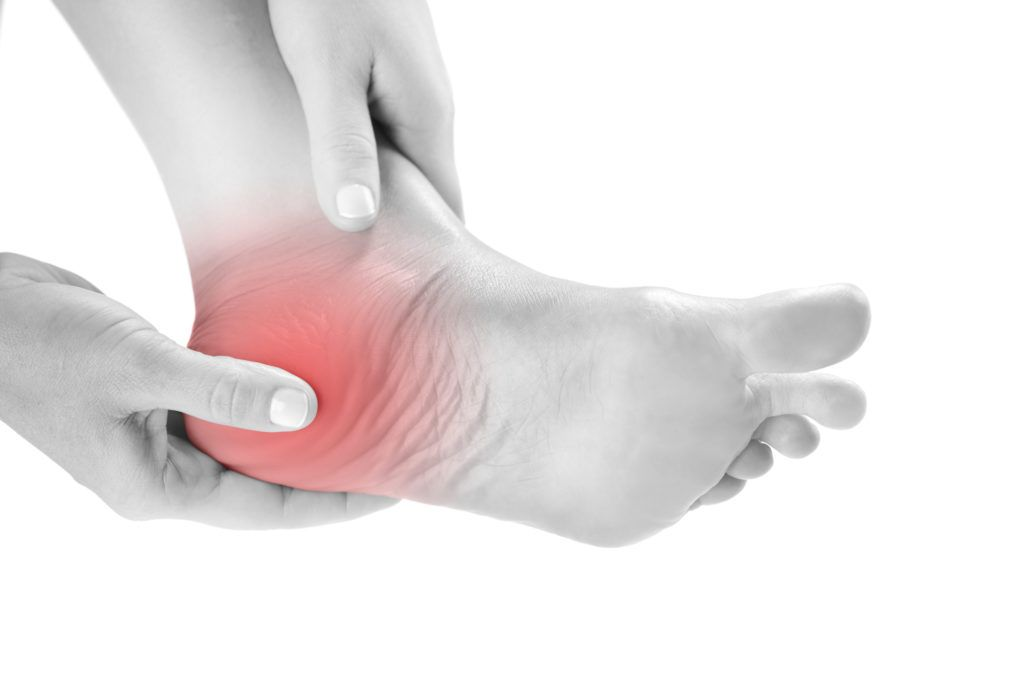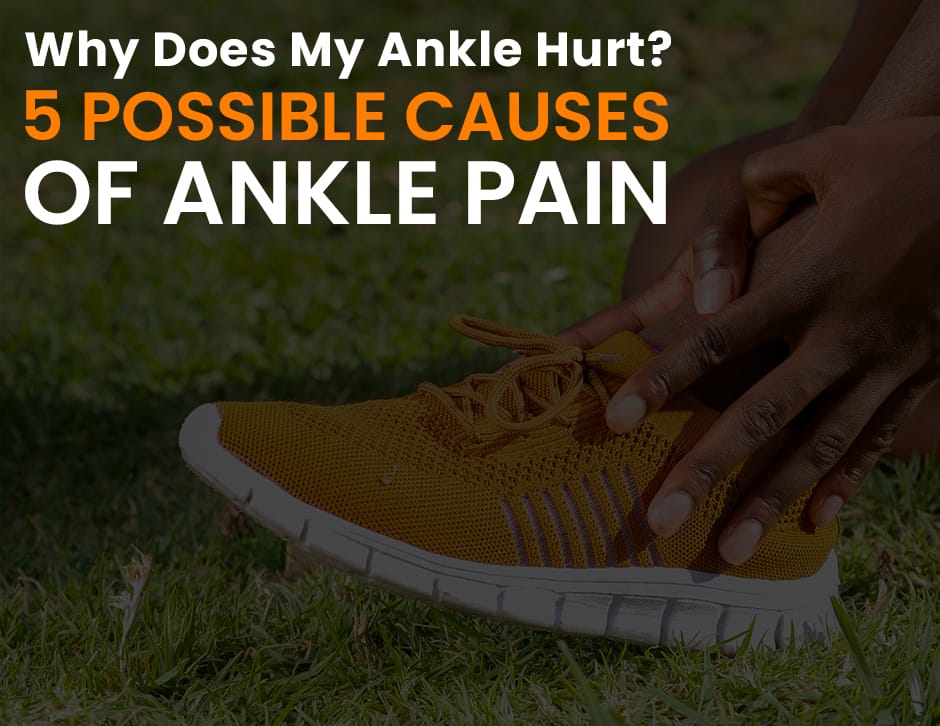The ankle joint is an important articulation site of the body. The point where the bones of shin (tibia and fibula) meet with the bones of the foot and heel (talus and calcaneus) is known as the ankle joint. It is categorized as a hinge joint, which means it allows to and fro movement of the foot. Despite being a relatively smaller joint with limited range of movement, the ankle holds great importance due to its role in walking. Hence any pain in the ankle is prioritized above as it hinders movement.
The causes of ankle pain can be acute as in cases of injury or chronic due to diseases such as arthritis. Similarly, the reasons for pain are also very diverse, ranging from inappropriate footwear to serious diseases like gout. Sometimes the pain can be severe enough to make it difficult for a person to move. With regard to this, it can be helpful to know the types of ankle pain. Few of the common causes are listed below.

Ankle Sprains
The ankle joint is supported by multiple ligaments. These ligaments function to strengthen the joint and prevent excessive movement out of the normal range of motion. As a result of twisting or rolling, usually during sports and falls, the ligaments get stretched or torn. Consequently, pain, swelling and bruising ensues. Self-care in the form of RICE therapy (i.e. rest, ice, compression, elevation) and over-the-counter medications for analgesia are often sufficient.
However, a complete evaluation by a medical professional helps determine the extent of injury properly and commence treatment accordingly. Professionals at ‘Orthocure’ specialize in pain management using non-invasive procedures. If you have severe pain, a one-day consultation might benefit you greatly as they require no lengthy stays and effectively provide relief from pain.
Bunions/Calluses
Bunions are bony outgrowths found on the base of the big toe on the inner side of the foot mostly. Infrequently, they can be present around the little toe as well. They are visible as bumps which can be red and sore. When large, they can cause significant distress and pain while walking.
Hereditary factors play a role in development. High heels and uncomfortable shoes can also be a cause. Pain subsides with the use of medications such as NSAIDs. Ice can also be used. Shoe inserts or replacing shoes can also delay progression. In case if pain can not be managed, surgery is the alternate option.
Gout
It is a condition in which there is overproduction/underexcretion of uric acid. The extra uric is then deposited in joints. Most commonly, the big toe is involved first. The pain of gout is sudden, severe and episodic. The joint feels warm, swollen and tender.
If left untreated, the condition can progressively worsen. It is necessary to see a doctor as soon as you start noticing any symptoms. Many drugs are now available that can regulate uric acid metabolism. In addition, certain diet changes, such as cutting red meat, sea-food, etc, along with exercise also make a notable difference.

Bursitis
Bursae are small fluid filled sacs which serve to cushion and lubricate the joint. In the ankle, a bursae is present between the heel bone and the Achilles tendon. Any inflammation in a bursae is known as bursitis. Several factors can be responsible for causing bursitis, for example, repetitive exercises, previous history of sprain/injury, direct hit, etc. Conservative ankle pain treatment by resting and taking pain killers is adequate.
Also avoid the use of tight, ill fitted shoes. Appropriate footwear and warming up before exercise/ sports activities can prevent bursitis mostly. Yet if you suffer from recurrent bursitis, seek professional help. Orthocure makes the use of PRP injections and stem cell therapies to encounter pain and effectively treat various diseases. They also recommend physical therapy depending upon the individual’s needs. Physiotherapy can be both preventive and curative in bursitis.
Tarsal Tunnel Syndrome
Tarsal tunnel is made by the bones of the ankle and ligaments. When the posterior tibial nerve, supplying the ankle, gets compressed, it results in tarsal tunnel syndrome. The pain is usually sharp stabbing in character. Other symptoms include numbness and tingling in the affected foot.
Medical conditions such as diabetes, varicose veins and arthritis, etc are known to be associated with tarsal tunnel syndrome. NSAIDS and steroids are usually used to relieve pressure and swelling. Braces and splints can also help in alleviating pressure and preventing compression. Rarely, surgical procedures for tarsal tunnel release are needed.


